%20-%20Dec%205th%20-%20High%20Res-1.jpg) With all the ARC+ boats now safely in port (apart from those who departed Mindelo late), many of the crews have been taking time out to enjoy exploring the beautiful spice island of Grenada after sailing 3,000 NM to reach it! They will not be disappointed, as there’s so much to love about the tri-island nation of Grenada, Carriacou and Petit Martinique: With less than 110,000 inhabitants and only 133 square miles of land, there are picture postcard beaches, lush green rainforests and sunshine aplenty.
With all the ARC+ boats now safely in port (apart from those who departed Mindelo late), many of the crews have been taking time out to enjoy exploring the beautiful spice island of Grenada after sailing 3,000 NM to reach it! They will not be disappointed, as there’s so much to love about the tri-island nation of Grenada, Carriacou and Petit Martinique: With less than 110,000 inhabitants and only 133 square miles of land, there are picture postcard beaches, lush green rainforests and sunshine aplenty.
The ARC+ fleet is docked at Camper & Nicholsons Port Louis Marina in the beautiful lagoon just outside St. George’s, the capital of Grenada. Relaxing after their ocean crossing, many crews are joining island tours to experience what Grenada has to offer.
St. George's is a picturesque city with red-tile roofed shops and homes dotting the hillside of an old volcano crater. The beautiful horseshoe-shaped harbour and yacht lagoon are memorable sights. It also has a colourful Saturday fruit & vegetable market ,and indoor market selling souvenirs and spices such as nutmeg, cinnamon and ginger.
The area has also seen its fair share of buccaneers and military coups over the years. The French and British both fought to colonise the island and their influence can still be seen around St George’s. Fort George was built by the French and is now home to the Police Academy. Some participants took a hike up the hill for the incredible sunset views. On the east side of the capital, Fort Frederick is known as a backward facing fort as the French built it for inward attacks as well as those from the sea.

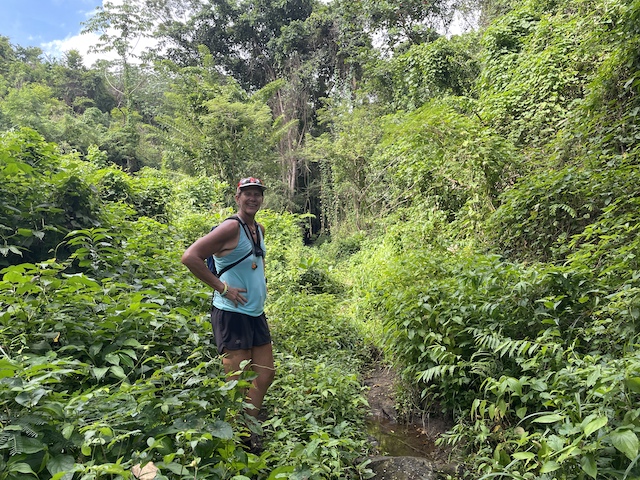
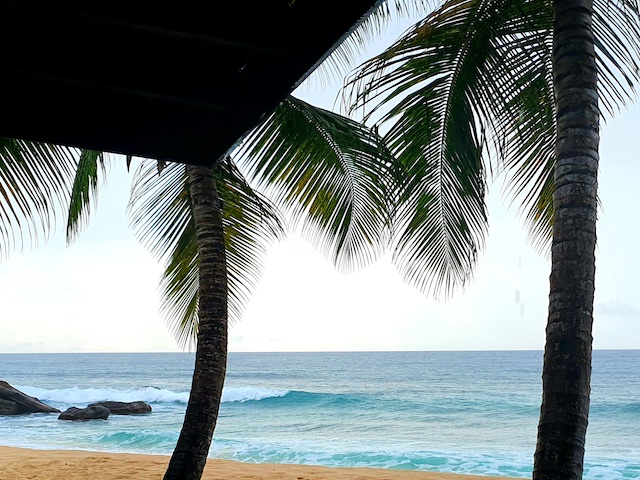
Back to nature
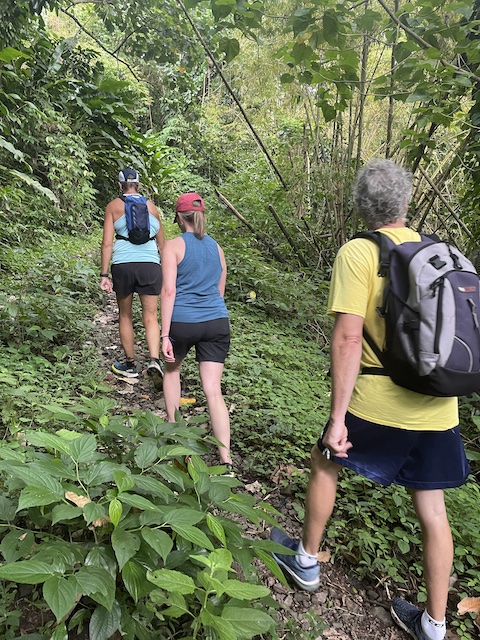 Beyond St George’s lies a nature lovers paradise. Tranquil Grand Etand National Park is an area of outstanding natural beauty. The rainforest has many walking trails and hikes for all abilities. Known as the ‘Indiana Jones of Grenada’, Telfa Bedeau is something of a nationwide celebrity; mapping out old hiking trails for future generators. He has walked, rowed and mapped nearly every nook and cranny of Grenada's rugged terrain, covering 16,093km and climbing its highest peak, Mount Saint Catherine, a staggering 217 times. The Hash House Harriers claim they are ‘a drinking club with a running problem’ and it was started in 1938 by a group of British expats. They meet every Saturday to walk or run different trails around the island. As usual, they welcomed the ARC+ participants; many of whom joined in some of the wonderful hikes.
Beyond St George’s lies a nature lovers paradise. Tranquil Grand Etand National Park is an area of outstanding natural beauty. The rainforest has many walking trails and hikes for all abilities. Known as the ‘Indiana Jones of Grenada’, Telfa Bedeau is something of a nationwide celebrity; mapping out old hiking trails for future generators. He has walked, rowed and mapped nearly every nook and cranny of Grenada's rugged terrain, covering 16,093km and climbing its highest peak, Mount Saint Catherine, a staggering 217 times. The Hash House Harriers claim they are ‘a drinking club with a running problem’ and it was started in 1938 by a group of British expats. They meet every Saturday to walk or run different trails around the island. As usual, they welcomed the ARC+ participants; many of whom joined in some of the wonderful hikes.
There are also 18 waterfalls on Grenada and Annandale Falls is one of the most accessible. It lies in the centre of the island, close to Grand Etang National Park, but only a 20-minute drive from St Georges. Annandale sits in a stunning tropical setting with plenty of places to relax and enjoy the view. ARC+ participants found it the perfect stop for a dip in the cooling waters and it also has plenty of facilities, including a bar and restaurant.
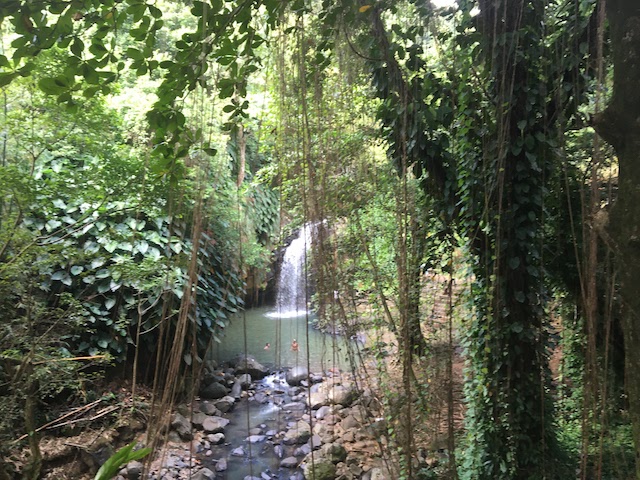
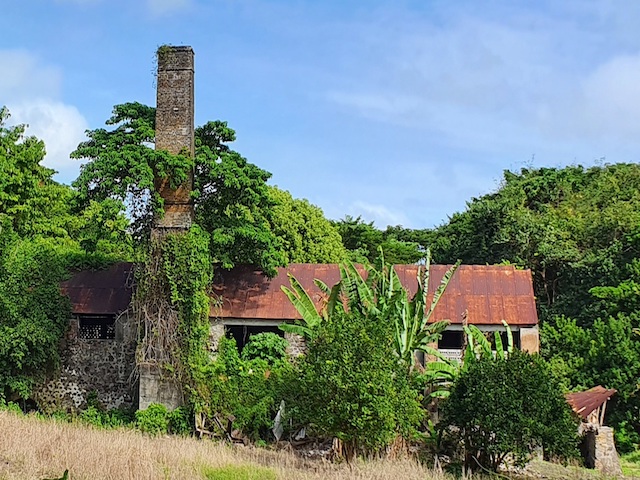

Pure Lime
There’s a real ‘can do’ attitude in Grenada, and for such a small island there’s plenty of cultural experiences to enjoy. Sport is the lifeblood of the island, and Grenada’s first and only Olympic Gold medallist, Kirani James inspired a whole new generation. He is so loved that the main stadium was renamed in his honour! Of course, surrounded by the beautiful waters of the Caribbean and Atlantic Ocean, it is also a sailing mecca. All participants received in their Grenada Tourism Welcome Bag, a copy of the brand new 2023-2024 Pure Grenada Guide to Yachting and Watersports in Grenada, Carriacou and Petit Martinique, published by Chris Doyle and Lexi Fisher in partnership with MAYAG.
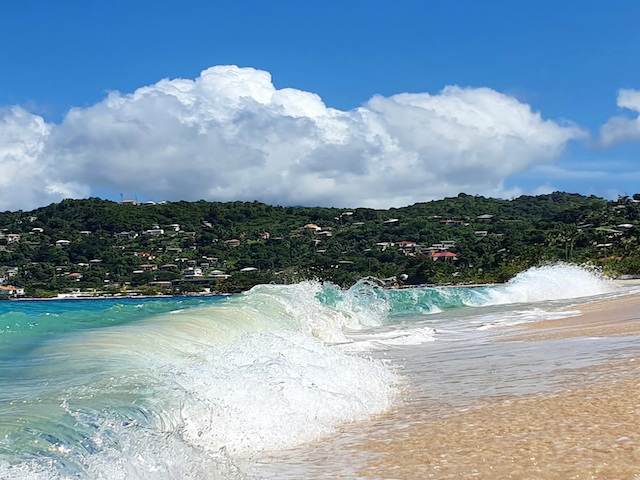 Grand Anse beach at the weekends is packed with people playing games or indulging in that other favourite pastime…liming. Good food, especially eaten together, is the lifeblood. The national dish is Oil Down, Caribbean soul food at its best; along with a good cook-up, Grenadians know how to party!
Grand Anse beach at the weekends is packed with people playing games or indulging in that other favourite pastime…liming. Good food, especially eaten together, is the lifeblood. The national dish is Oil Down, Caribbean soul food at its best; along with a good cook-up, Grenadians know how to party!
Grenada’s rich heritage, music, carnivals and festivals fill the island calendar. Popular forms of music in Grenada are calypso, soca, and to a lesser extent reggae and dancehall. Soca produced in Grenada has a distinct style that takes the name of ‘jab jab soca.
Chocolate - ground from the beans of happiness
Grenada National Museum and House of Chocolate is a permanent exhibition about the Islands’ love of chocolate, and there are five chocolate factories and many more cocoa farms on Grenada. With an increasing number of bean-to-bar chocolate makers, the island is on a path to becoming the chocolate capital of the Caribbean, and one of the finest chocolate producing countries in the world. Cacao trees were first introduced in Grenada in 1714, by the French and now, Grenada produces high quality, fine flavour cocoa and is known for its spicy and fruity aromatic components. This is mainly due to the topography of the island that serves the perfect climate and altitude for cacao trees to thrive.
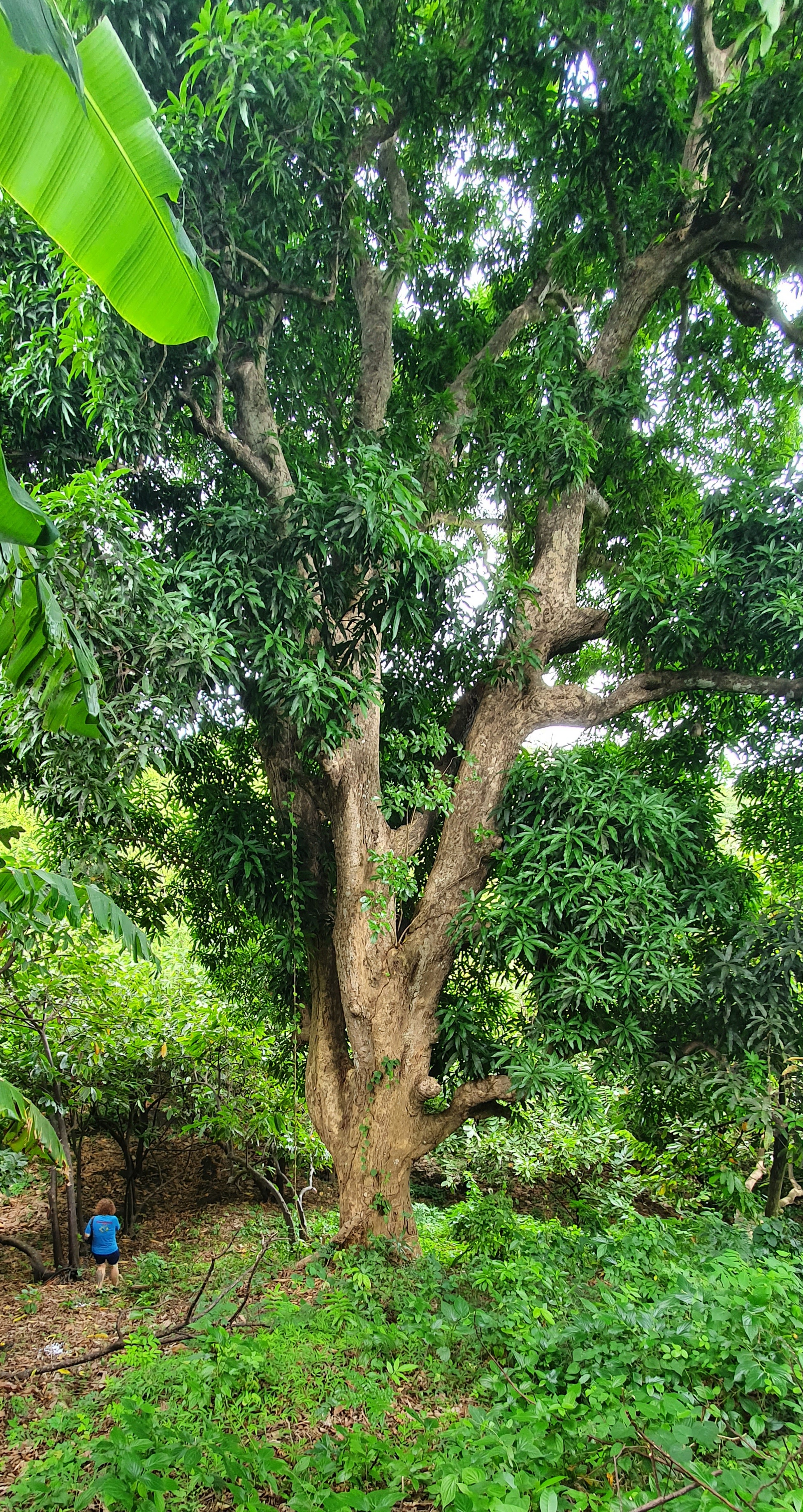
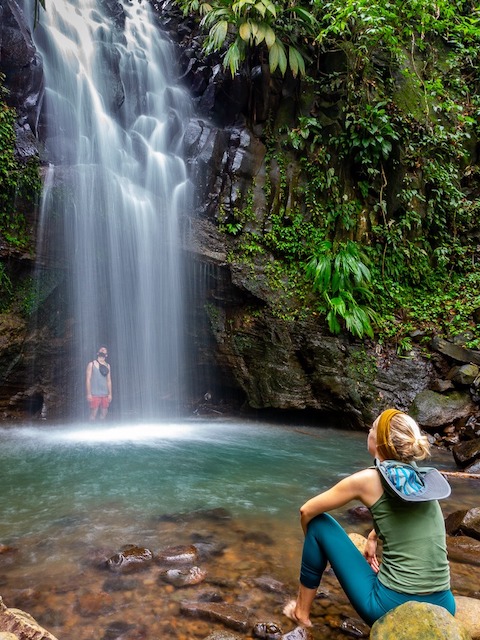
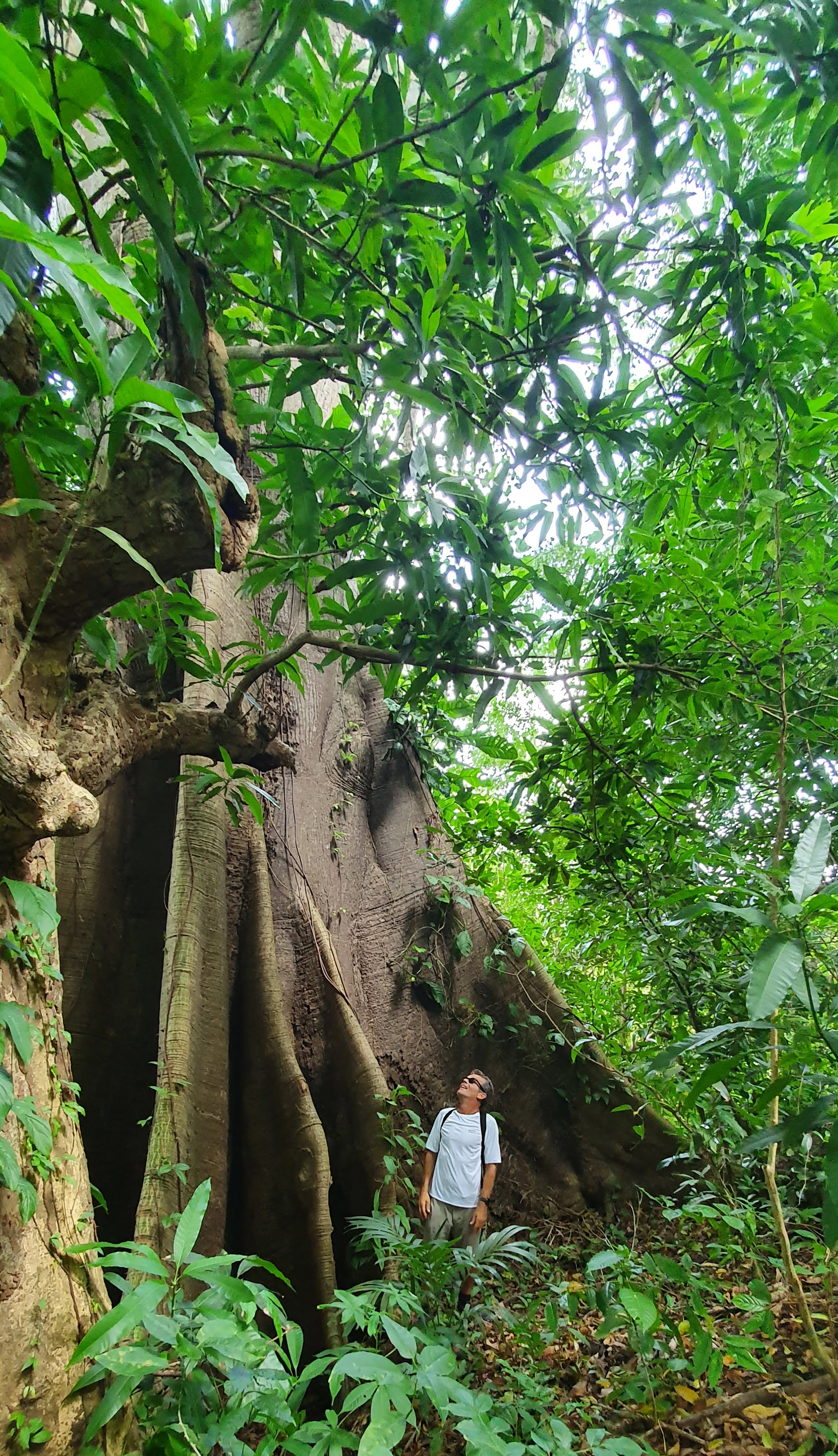
Several ARC+ families enjoyed a cocoa tour at Belmont Estate, located about an hour’s scenic drive from Port Louis Marina. Dating back to the 1600s it is the oldest working plantation, and visitors can tour their processing facilities, take part in ‘walking the cocoa’ - which is a process for drying the cocoa beans, and see the whole chocolate-making process. They thoroughly enjoyed eating the delicious Grenadian chocolate, that’s for sure!
Eat, sleep, beach, repeat - Beach life and dive sites
Leaving the interior, the rain forest leads down to some of the finest beaches in the Caribbean. Those in the south west face the Caribbean Sea and are perfect for swimming. The two mile stretch of golden sand at Grand Anse has something for everyone. East coast beaches face the Atlantic Ocean and are generally more wild. La Sagresse is considered a gem and Levera beach is a leatherback turtle nesting site. http://www.oceanspirits.org/.
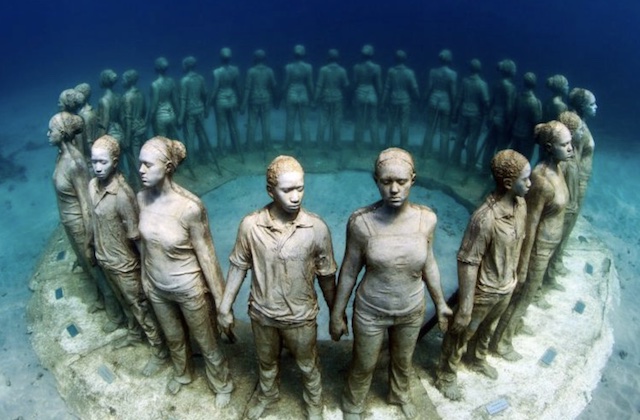
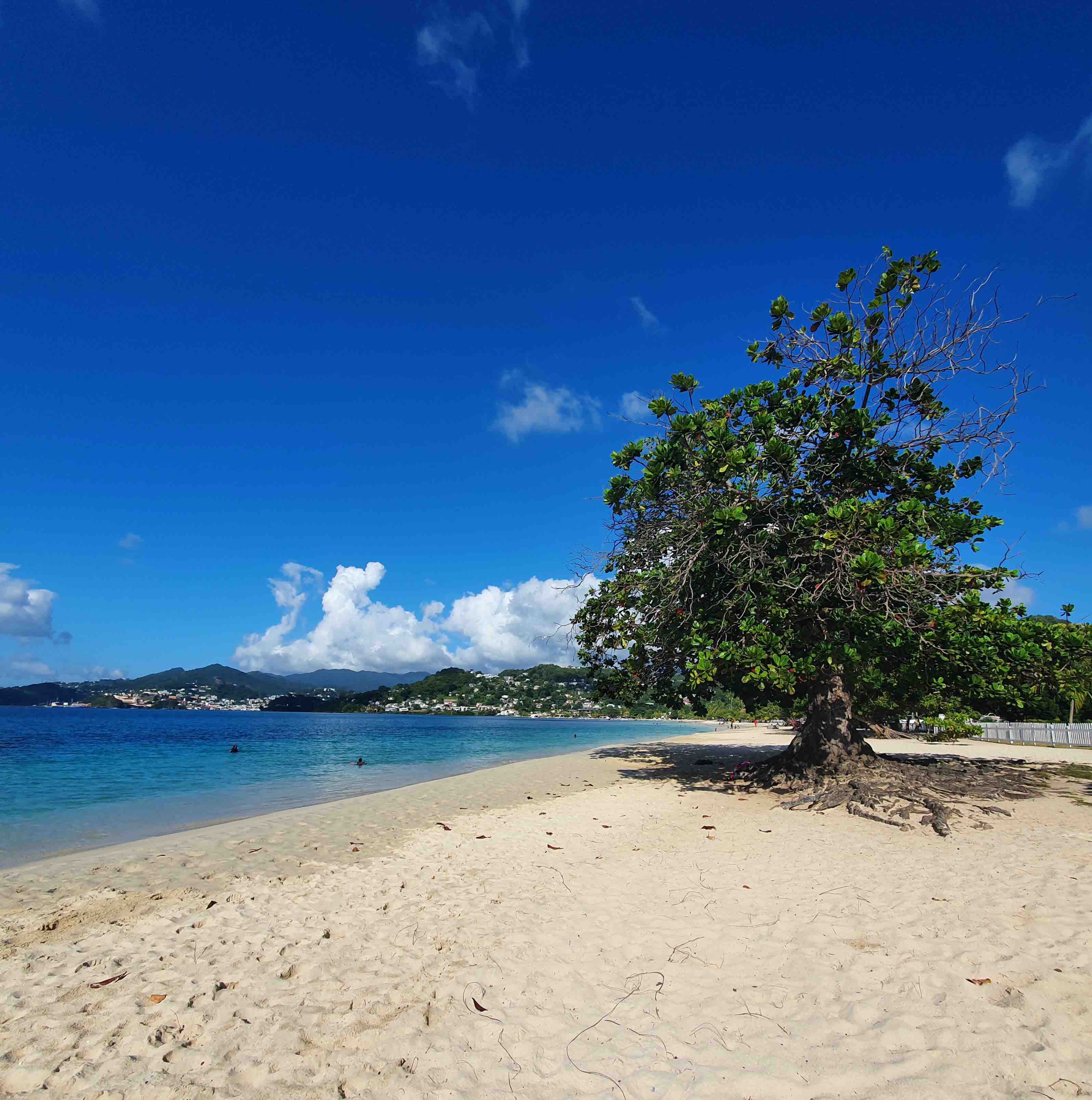
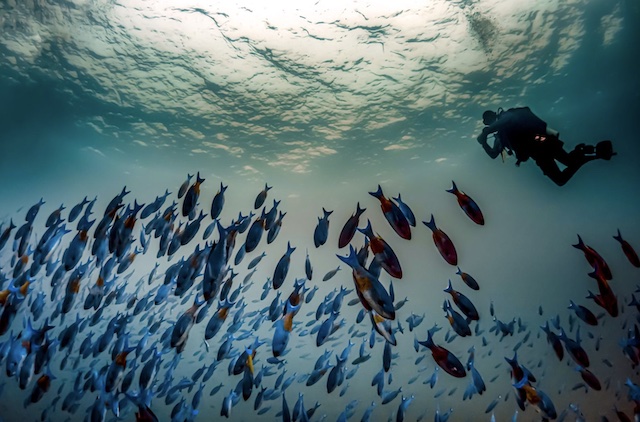
Underwater world
The islands and their striking beaches look even more impressive from the sea and Grenada is blessed with over 30+ dive sites. Their coral reefs are the envy of the Caribbean, being very healthy with great biodiversity. The Bianca C is an Italian ship that sank off the coast in 1961 and the ‘Caribbean Titanic’ attracts the more experienced diver. Grenada’s Marine Protected Area is also home to the world’s first unique Underwater Sculpture Park now listed as one of National Geographic’s 25 Wonders of the World. It is a collection of unique underwater sculptures and a popular site for diving & snorkelling. The sculptures are a mix of casts from the local community and promote coral growth. Molinere Bay Underwater Sculpture Park was the first of Jason de Caires Taylor’s underwater gardens. It was widely acclaimed as the first of its kind. The 75 works cover an area of 800 square metres and are located in a series of sand patches and gullies between natural rock formations. At depths of 5-8 metres, they are accessible by scuba diving, snorkelling and glass bottom boats, with departures from the capital St. Georges and from Grand Anse, both a short boat ride away.
Spice, spice and everything nice..
The blend of nutmeg, cinnamon, mace, cloves and cocoa are the aromas of Grenada, which is a major provider of nutmeg and mace. The first tree was planted by the British in 1843 and the fishing village of Gouyave in the parish of St John, is home to the nutmeg processing plant and the estate Gouyave Nutmeg Processing Station, which uses traditional techniques. Grenada has a huge spice industry – so much so that it is nicknamed ‘The Spice Island’. Nutmeg, cinnamon, ginger, cloves, allspice, bay leaves and turmeric are some of the spices you can find on the island which is a top exporter of these products. So spicy is this island, that there’s even a little nutmeg on its flag!
.
Synonymous with the Caribbean is of course rum and one of the things that every participant looks forward to on landfall is the ice-cold rum punch that they are greeted with on arrival – day or night! Grenada also produces great rum and has a number of distilleries spread across the island. The rum produced is both for export and island consumption. River Antoine has been producing the Rivers rum for over 200 years. The ancient waterwheel used to crush sugar cane is still used today. They produce a rum punch, a 69% white rum, and a 75% white rum (for local use only!). Clarke’s Court rum was formed in 1937 and the Westerhall Estate produces high-quality branded rum products for the local and international markets. There new rum producers have been popping up and produce what sailors around the world consider to be their favourite tipple!
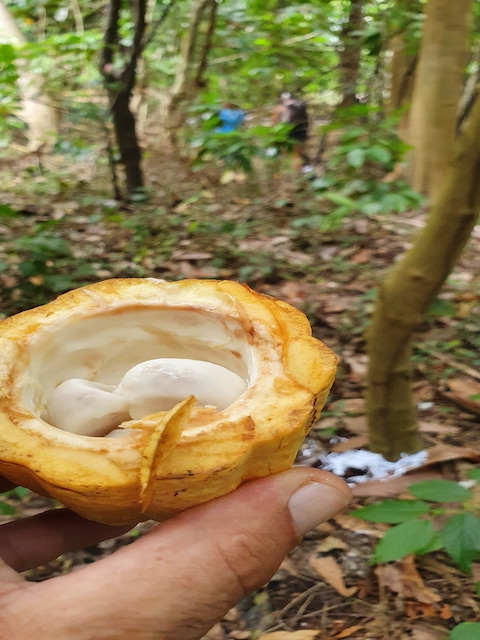
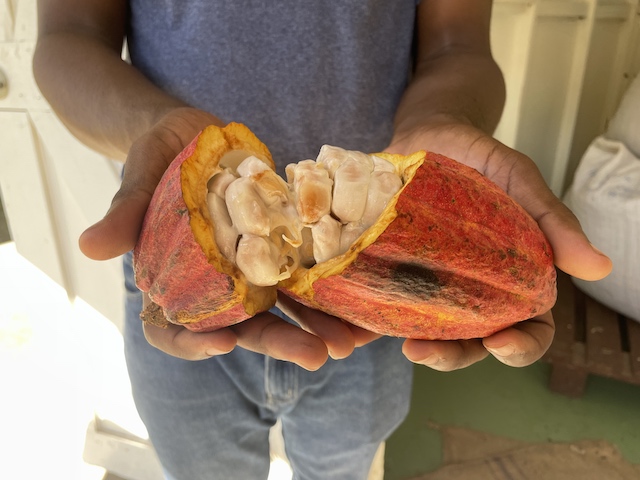
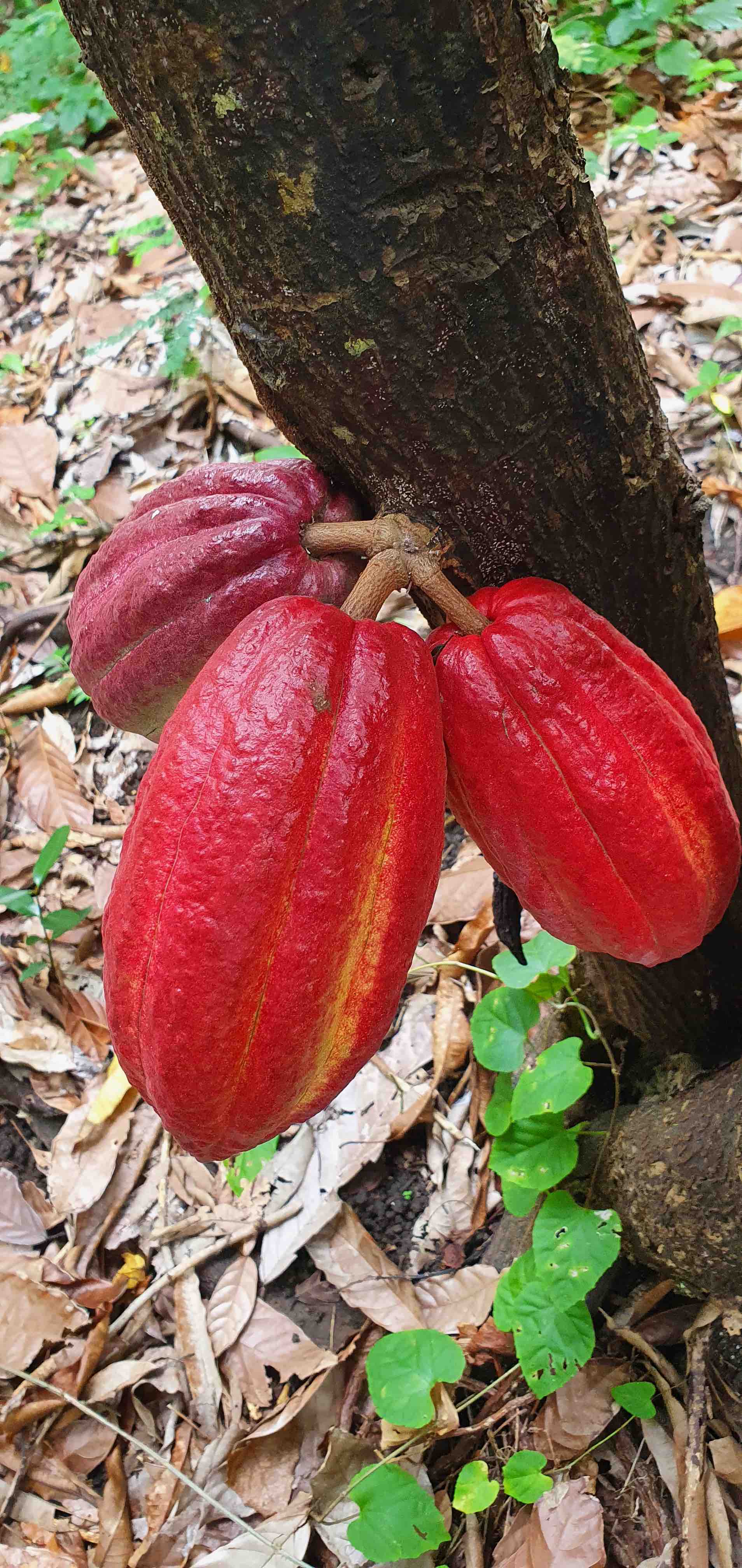
Garden Island – flora and fauna
They say a seed will grow wherever it is thrown in Grenada. Rich volcanic soil and plenty of sunshine are a gift. Grenada has an incredible record at the RHS Chelsea Flower Show, consistently winning gold at its shows and success is due to the biodiversity on the islands. The Central Highlands support a wide variety of forest trees and many types of tropical flowers and shrubs grow throughout the island. Characteristic wildlife includes the hummingbird, egret, dove, and wild pigeon. Also to be found are armadillo, agouti, and monkeys. Look out for those cheeky monkeys in Grand Etang National Park whilst on a tour!
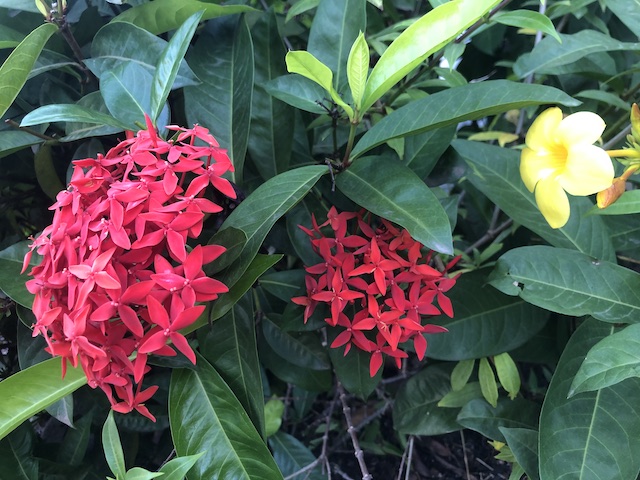 .
. 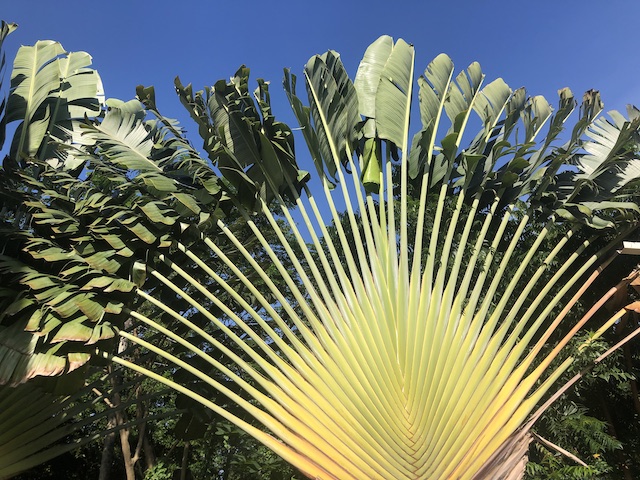 .
. 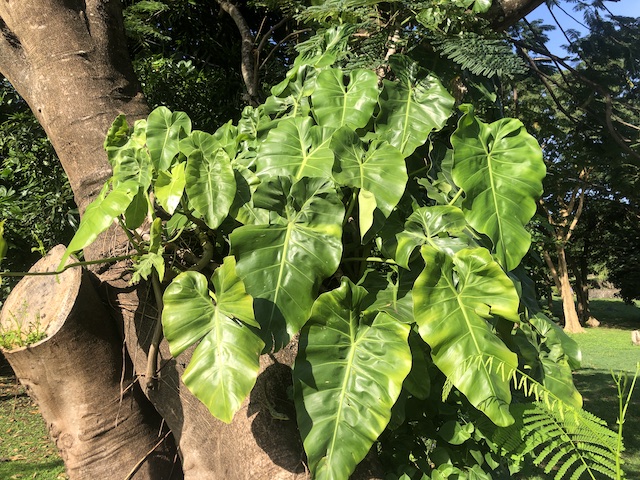
Traditional boat building
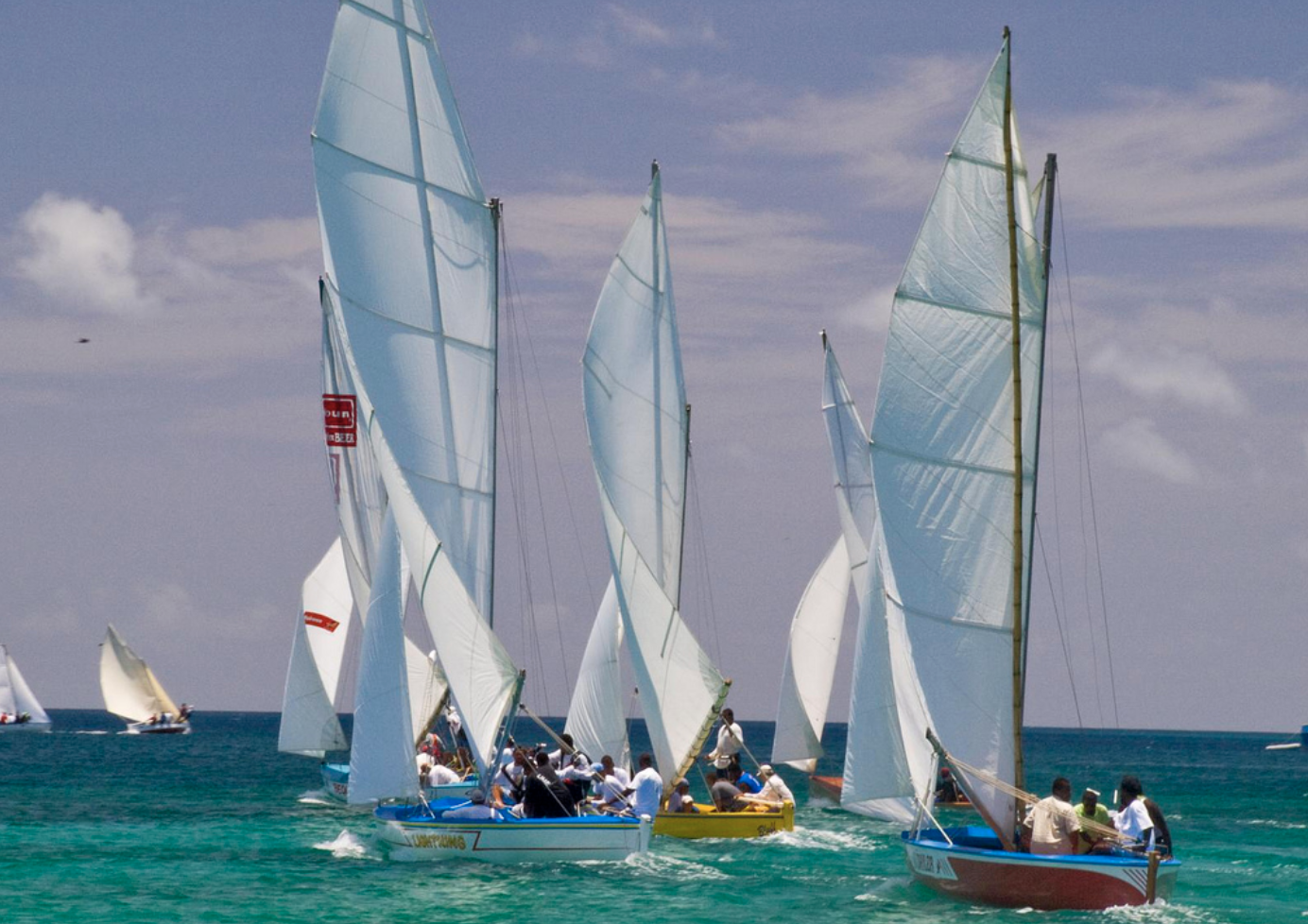 Carriacou feels like the Caribbean of old. Traditional ways of life are still in practice and boat building remains part of the cultural make-up. The wooden-built sloops are a work of art and techniques haven’t changed for generations. During the 19th century, Scottish boat builders brought traditional wooden cargo boats to transport goods between islands. This inspired generations of talented local Caribbean shipwrights. These skills are now in danger of dying out due to reduced demand and financial support. Oceanscape, a charity project now reconnects Caribbean youth with the ocean to learn these practical boat building skills and re-connect with the ocean to preserve their cultural heritage, environmental awareness and also create employment in boatbuilding, sailing, fishing and chartering and transport.
Carriacou feels like the Caribbean of old. Traditional ways of life are still in practice and boat building remains part of the cultural make-up. The wooden-built sloops are a work of art and techniques haven’t changed for generations. During the 19th century, Scottish boat builders brought traditional wooden cargo boats to transport goods between islands. This inspired generations of talented local Caribbean shipwrights. These skills are now in danger of dying out due to reduced demand and financial support. Oceanscape, a charity project now reconnects Caribbean youth with the ocean to learn these practical boat building skills and re-connect with the ocean to preserve their cultural heritage, environmental awareness and also create employment in boatbuilding, sailing, fishing and chartering and transport.
Carriacou is also known for its coral reefs and clear shallow waters. Sandy beaches include horseshoe-shaped Tyrell Bay Beach, with a yacht harbour. Boats built using traditional methods developed in the 1800s dot the shores. Housed in an old cotton mill, Carriacou Museum features exhibits illuminating the island’s African, French and British history.
The six-day Grenada Sailing Week takes place from 29 Jan to 3 Feb 2023. In 2023 the regatta kicks off at the Tyrrel Bay Marina in Carriacou with the welcome and skippers briefing and crews can then join the Carriacou Round Island Race.
Go to the Grenada Tourism Authority website for more information on exploring this beautiful spice island: HERE